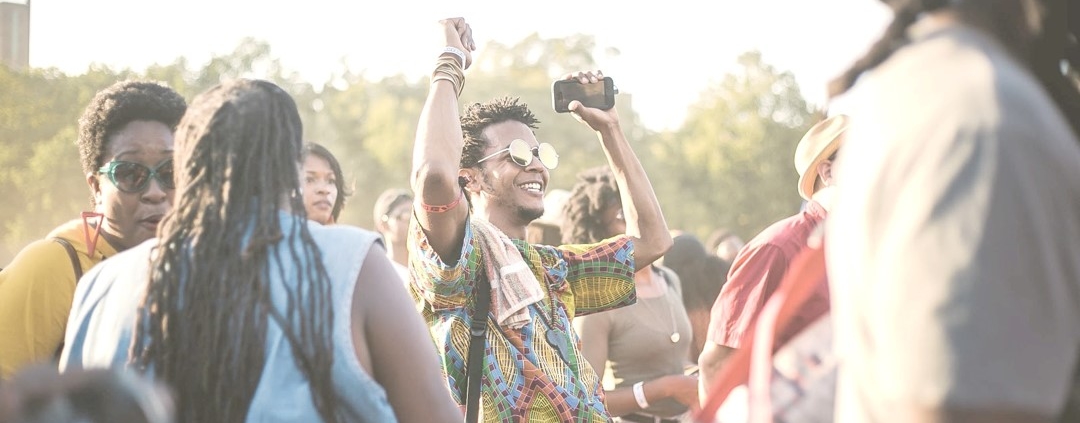Event Photography Welcomes a New Kid in Town: Video – and the Industry loves it!
Photography has played a major part in mass participation events for decades. I remember when I first participated in a kids run – it must have been around 1992 – I received a printed photo by mail with the event’s logo on it. My parents were so proud they actually framed it and hung it onto a wall at our house. I think it still hangs there, almost 30 years later…
While society and especially technology have come a long way since 1992, I find it remarkable that event photos today are still pretty much the same as they used to be.
Of course there have been changes; most photos are now available online. You can go to a photo library, enter your BIB number or your name – and most recently you can even upload a picture of yourself – and you can find all the pictures that have presumably been taken from you during the race.
Once you click on that “SEARCH” button, though, reality hits you. The quality is often underwhelming, you’re not the focus of the image (if you’re even in it…) or the photographer just caught you in a bad moment.
What makes things worse is that you have to pay for the photos if you want to download or keep them.
I might be slightly biased but I find that rather disturbing. Prices for registering in a mass participation event are continuously going up, and still I’m being asked to pay more money if I want my personal souvenir?! Shouldn’t this be part of my registration fee?!
There’s hope…
As brands are looking to digitize their sponsoring engagements, race photography has gained a remarkable interest, and rightfully so. We see more and more organizers offering the race photography platform to sponsors. While these sponsors cover the costs associated with the capturing and production of the photos, they can brand these photos with their logos or slogans. This way everybody wins:
- Sponsors because they get a new, digital platform to communicate their brand and productmessages.
- Organizers because they get to offer an additional service to their racers.
- And the racers because they get their photos for free.
But guess what?! It gets even better!
Because now there’s a new kid in town, and it’s challenging the “old” industry: Race videography!
In 1979, the Buggles proclaimed that “Video killed the Radio Star” – will it kill the Photo Star next? The short answer is “no”. But there’s reason to believe that video will become more than just a challenger in this industry. And that there are interesting opportunities for the photography industry to learn from the video makers of the world.
Why Video?
For sponsors, storytelling has become one of the most important aspects of their engagements. You need to tell a compelling story about your brand in the context of a sponsoring engagement, otherwise the public won’t believe it. And sports offer tremendous opportunities for storytelling. Video, by far, is the most effective tool to tell these stories. That’s proven by research:
- 55% of people pay more attention to videos than any other type of content according to OmniKick.
- When viewing a video, the average user retains 95% of the message contained in it; if we talk about texts, this percentage drops to 10% finds Wirebuzz.
- Every day, over a billion hours of video are watched on Youtube.
- HubSpot found out that 78% of online users watch at least one video every week. And 55% watch one every day.
- And Cisco notes that by 2020, video will account for more than 80% of total online traffic.
So the data on the effectiveness of the video tool is clear. But what sort of video product can compete with the almighty above-mentioned race photo?
The answer is a product that – just like the photos are supposed to do – puts the individual front and center. A product that turns to one person at a time, creating messages that are personalized and crafted in a one-to-one perspective. The answer is personalized video content.
It is no coincidence that Forbes defines personalized videos as “the definitive marketing breakthrough that brands need.”
“It’s only when it feels like you’re communicating one-to-one with your audience (…) that they will form an emotional connection and relationship with your brand. Both video and personalization are effective ways to create connections in your marketing at scale, and leveraging both at once only quickens the relationship building process” says the CEO of a well-known personalized video platform.
How videos are changing event coverage
With all this in mind, let’s turn our attention back to the initial example race photography that is now getting competition from personalized videos. Why is video now challenging, some would even say disrupting an industry that has been dominated by photography for so long?
Because it offers sponsors, organizers and brands opportunities no photo ever will. And here are three examples that tell you why.
Brand exposure
Just look at the length of the media consumption. Personalized videos from a race can be up to 4 or 5 minutes long. They show a person competing in the race at different points in time. This translates into hundreds of hours of branded video content produced and consumed at a mass participation event, and it offers tremendous branding opportunities for sponsors who want to use videos to create personal relationships.
More personalization
Another advantage lies in the enrichment capabilities of a personalized video. The more data you have from a participant, the more personal you can create the video experience. And the more targeted you can embed product messages in the video. Take the example of a shoe manufacturer who can promote different shoe models to different runners based on their performance in the race.
Video enrichment
That level of personalization can be achieved using interactive elements such as personalized Call-to-Actions that take the recipient directly to the webshop where the suggested product can be bought.
That’s something no photo will ever do, especially not the hard copy ones – and definitely not the one that’s hanging on my parents’ wall…

A note on digital event activation
Over the course of the last couple of years there’s been an increasing interest in on-site activations through video. The storyline is similar to the one in sports described above. Sponsors of music, food or film festivals for example are looking for ways to activate the crowds, to enhance their engagements. For years, photo booths were the number one go-to-solution for these activations. Brands, exhibitors or organizers would set up a photo box, put people in front of it and have them take a selfie. The photo gets printed, the visitors take it home and forget about it…
The step to digital imagery has taken place recently. Now you can choose between a print-out and a digital photo, with the digital one offering various benefits to the one providing the photo.
By taking this one step further, you get into the exciting world of video. Video is opening up new opportunities for brands who are looking for truly unique activations and customer experiences. Put your visitors, guests or fans in a video and you’ll see a much higher engagement. Because you can do things on film that no photo can ever do. Sounds familiar? Well, it should… 🙂



